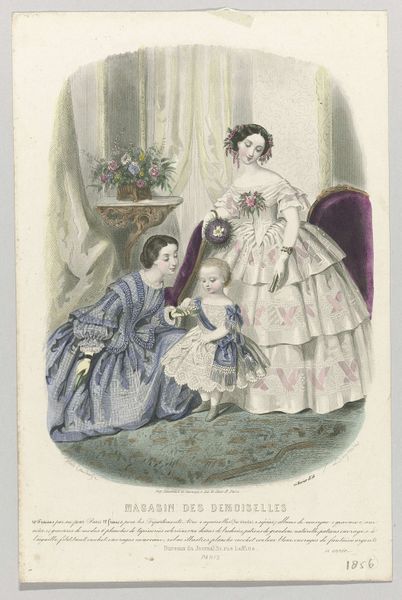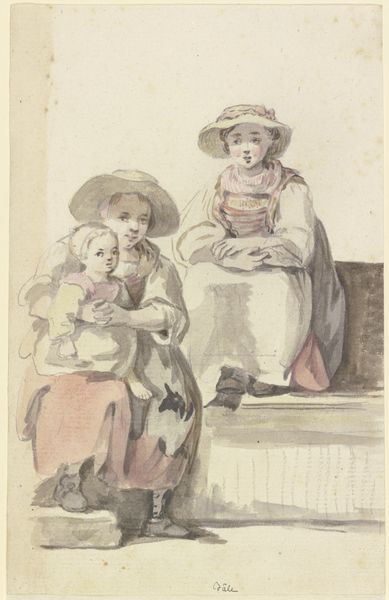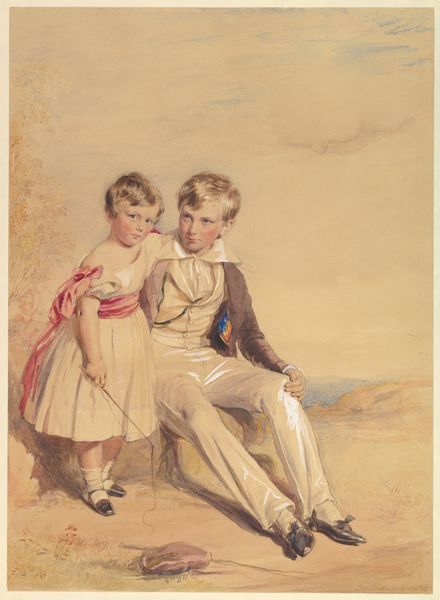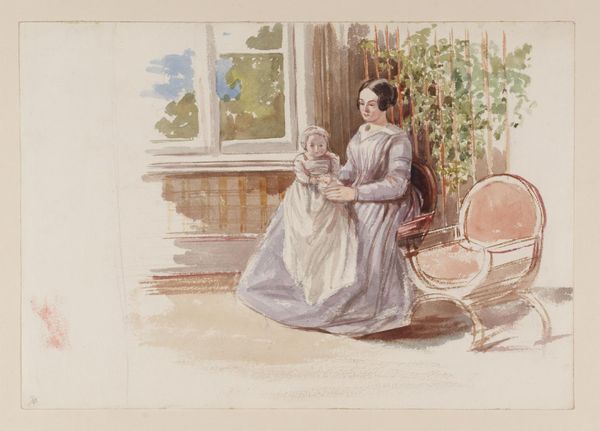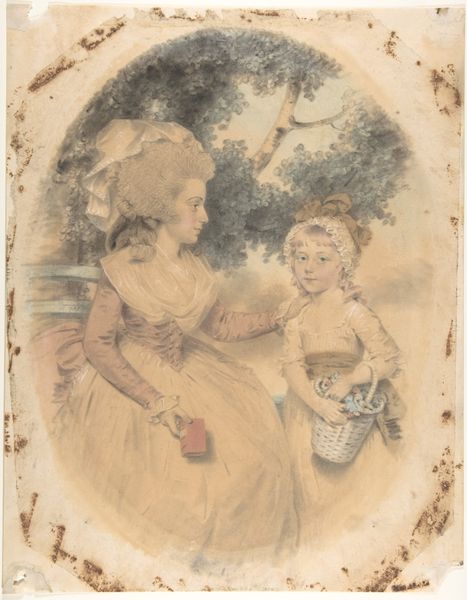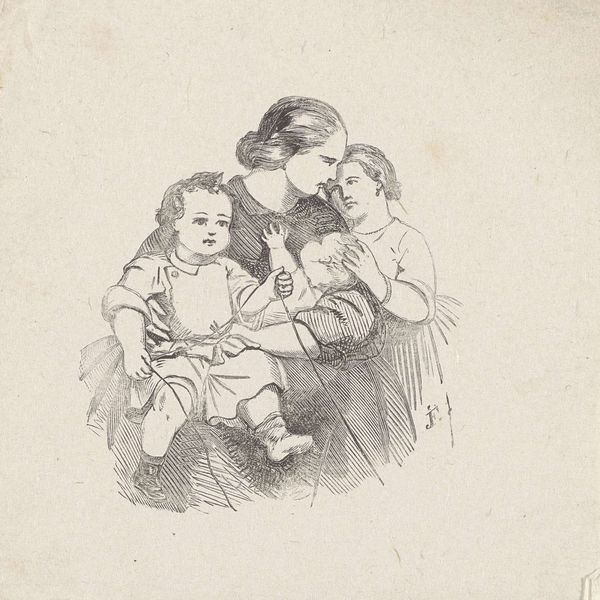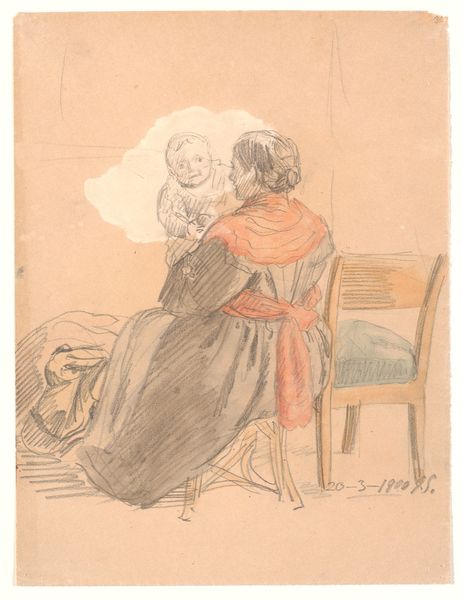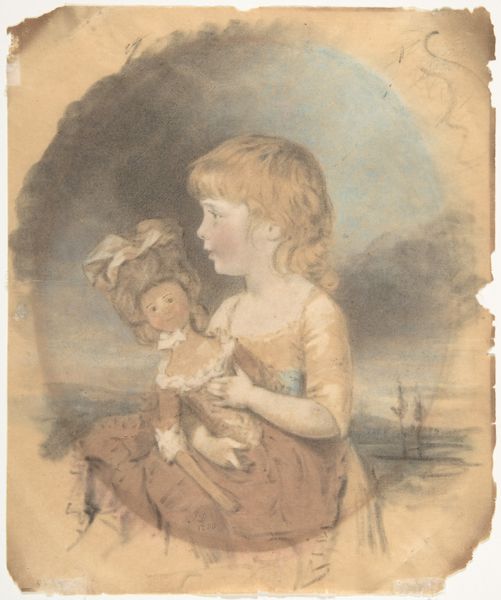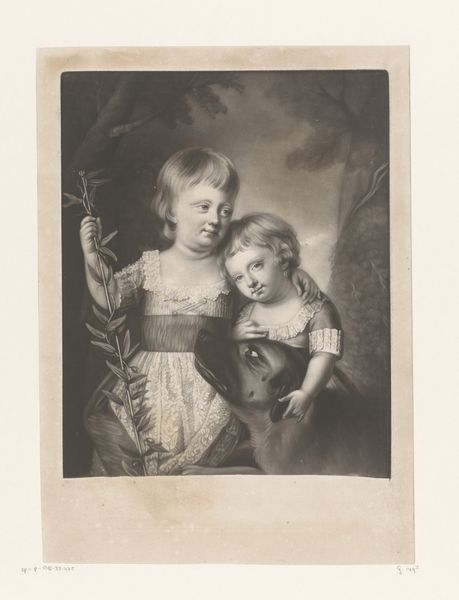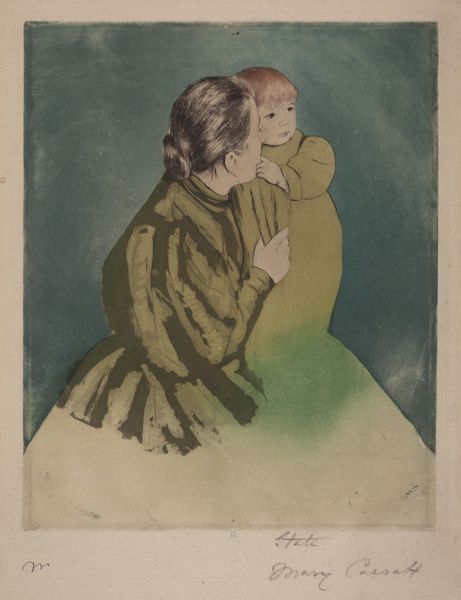
drawing, painting, print, paper, watercolor
#
portrait
#
drawing
#
painting
# print
#
caricature
#
paper
#
watercolor
#
group-portraits
#
romanticism
#
genre-painting
Dimensions: 260 mm × 176 mm
Copyright: Public Domain
Curator: This is "Hugh and Florence, Ashford," a watercolor and graphite work dating back to 1848 and currently held at the Art Institute of Chicago. Editor: It's such a tender scene. There's a delicate quality to the watercolor washes that evokes a sense of nostalgia and perhaps the quiet of domestic life. Curator: Indeed. The artist, Elizabeth Murray, captures a serene domesticity. Let's examine how the composition, particularly the pyramidal arrangement of figures—mother and daughters—reinforces stability. The interplay of light and shadow also enhances the visual weight and symbolic depth of this grouping. Editor: I am intrigued by the visible graphite underdrawing. It highlights the labour of creation, the initial marks and structure underpinning what seems like a light, effortless portrayal. You see that this piece shows the means of production in its very layering. The drawing isn't erased; it is integral. Curator: Precisely. Moreover, we might interpret the muted palette as deliberately constrained, perhaps reflecting the social constraints placed on women and the presentation of family within Romantic-era aesthetics. Consider also the way their dresses, voluminous but subtly rendered, articulate class and domestic role. Editor: I am less interested in the muted social commentary. What speaks to me is the physical presence of paper, watercolor, graphite—these tactile, mundane materials that become transformed through labor and skill. This work provides us with information not only of those that are portrayed, but insight into the era and the materiality of daily life at the time it was made. The texture is vital. Curator: Of course. Looking at Murray's method of representing texture allows us insight into artistic priorities of the time, how she uses technique and visual form to frame the subjects within the cultural narrative of motherhood. Editor: Right, the narrative isn't merely what is pictured, but inherent to every aspect of the making. Thank you for this dialogue on this beautiful, delicate work of art. Curator: It was a pleasure delving into this scene with you and exploring the form and implied meaning in "Hugh and Florence, Ashford".
Comments
No comments
Be the first to comment and join the conversation on the ultimate creative platform.
